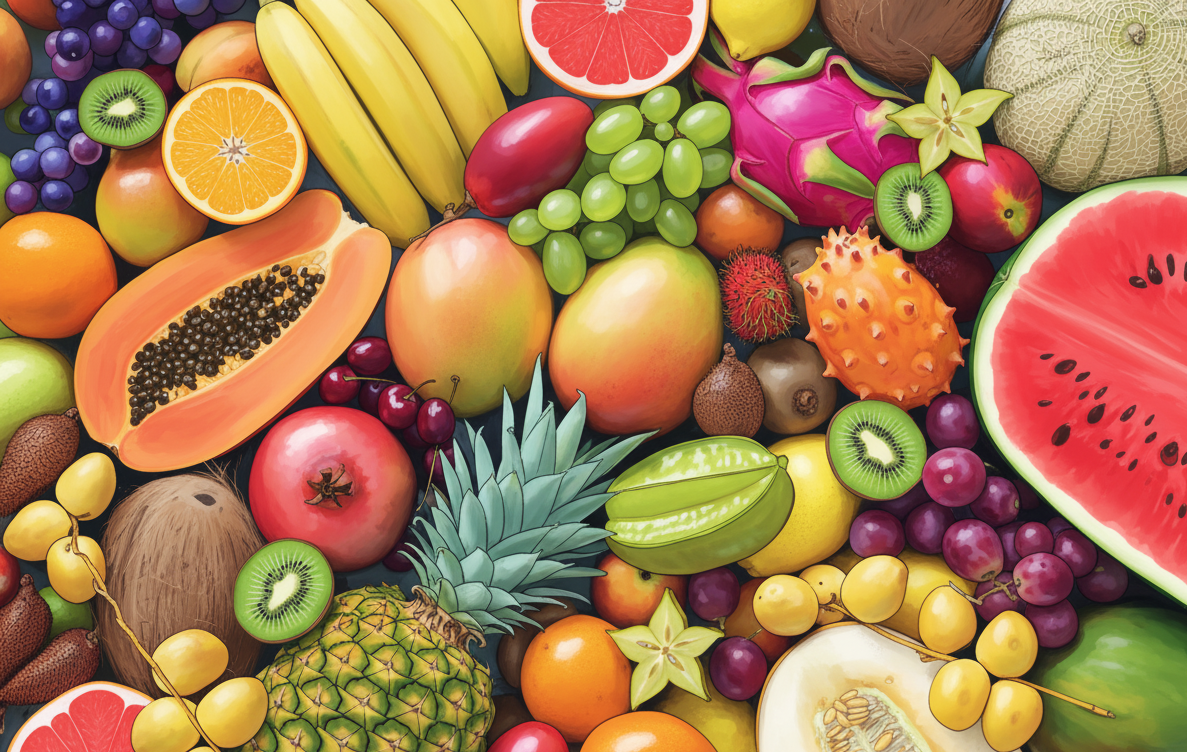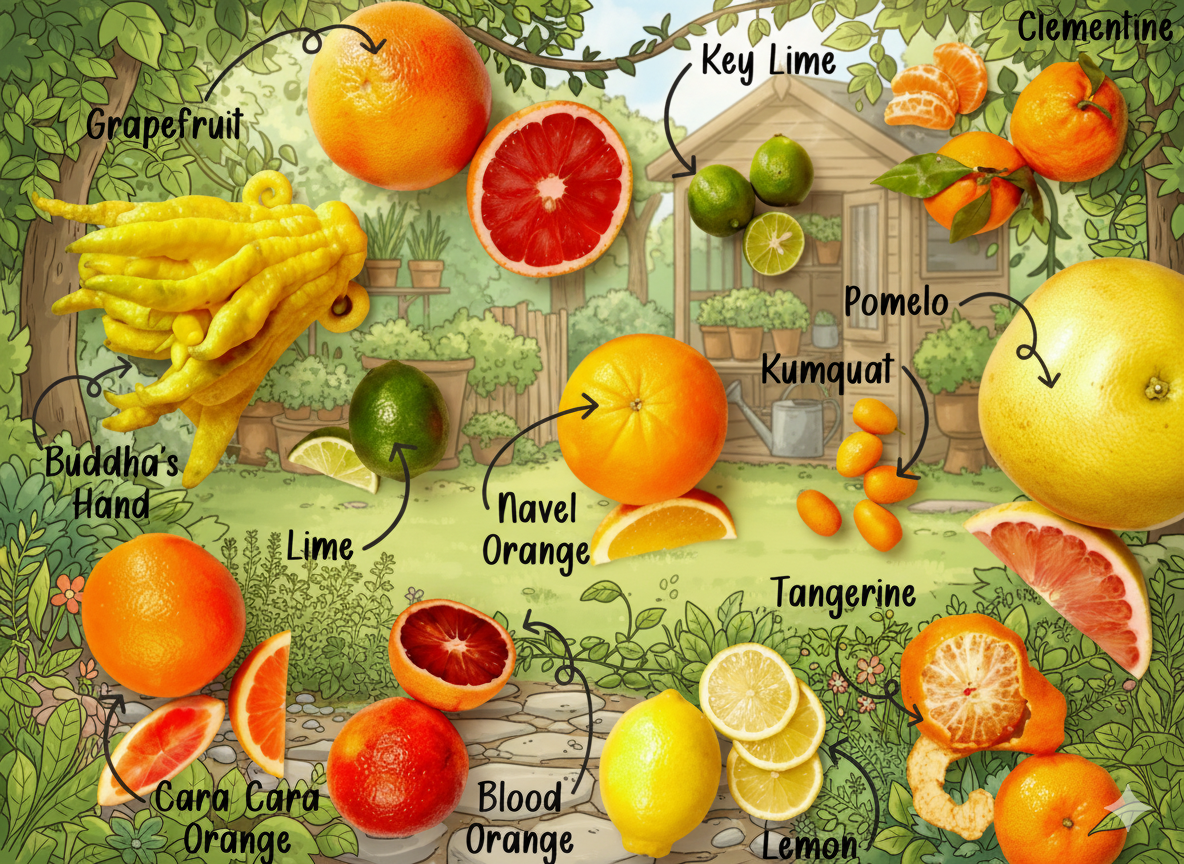Introduction
Welcome to a vibrant exploration of the Tropical Fruit Medley, a delightful assortment of nature’s most colorful and nutritious offerings. Known for their exotic flavors and vibrant hues, tropical fruits not only tantalize the taste buds but also provide numerous health benefits. In this comprehensive guide, we’ll delve deep into the world of tropical fruits, their nutritional profiles, culinary uses, and even their significance in art and culture. So grab a slice of pineapple or a bunch of bananas, and let’s embark on this fruity adventure!
The Allure of Tropical Fruits
Tropical fruits are grown in warm, humid climates and are often associated with paradise-like environments. These fruits are not just delicious; they are also packed with vitamins, minerals, and antioxidants that can boost your overall health. Some of the most popular tropical fruits include:
- Mango
- Pineapple
- Banana
- Coconut
- Papaya
- Passion Fruit
- Guava
Mango: The King of Fruits
The mango, often dubbed the “king of fruits,” is beloved worldwide for its sweet, juicy flesh. Rich in vitamins A and C, mangoes are known for their immune-boosting properties. They can be enjoyed fresh, in smoothies, or even in savory dishes.
Pineapple: A Tropical Delight
Pineapples are not only delicious but also packed with bromelain, an enzyme that aids digestion. Their sweet and tangy flavor makes them a perfect addition to fruit salads, desserts, and even grilled dishes.
Banana: The Convenient Snack
Bananas are one of the most convenient fruits to consume, making them a popular choice for on-the-go snacking. They are rich in potassium, which is vital for heart health and muscle function.
Nutritional Benefits of Tropical Fruits
Each tropical fruit boasts unique health benefits. Here’s a closer look at the nutritional profiles of some of the most popular tropical fruits:
Vitamin Richness
Tropical fruits are generally high in vitamins, particularly vitamin C and vitamin A. For instance, one cup of diced pineapple provides about 79 mg of vitamin C, which is crucial for collagen production and immune function.
Antioxidant Properties
Many tropical fruits are rich in antioxidants, which help combat oxidative stress and reduce inflammation in the body. For example, guava is loaded with lycopene and vitamin C, both of which are powerful antioxidants.
Fiber Content
Tropical fruits are also excellent sources of dietary fiber, which aids in digestion and helps maintain a healthy gut. Eating a variety of fruits like papaya and bananas can contribute to your daily fiber intake.
Culinary Uses of Tropical Fruits
Incorporating tropical fruits into your diet can be both fun and delicious. Here are some popular ways to use tropical fruits in your meals:
Fresh Salads
Adding chunks of mango or pineapple to a fresh salad can elevate your dish. Consider a tropical fruit salad with a mix of melons, papaya, and a drizzle of lime juice for a refreshing treat.
Smoothies and Juices
Tropical fruits blend beautifully in smoothies. Combine banana, mango, and coconut milk for a creamy tropical smoothie that’s perfect for breakfast or a snack.
Grilling and Roasting
Grilled pineapple adds a caramelized sweetness to savory dishes. Try skewering pineapple and shrimp for a delightful summer meal.
The Artistic Representation of Fruits
Tropical fruits have long been a source of inspiration for artists and designers. Their vibrant colors and unique shapes make them a favorite subject in art. For instance, you can explore how fruits have been celebrated in various art forms in our article on Feast Your Eyes: A Celebration of Fruit in Art Nouveau Style.
From Garden to Canvas
The beauty of fresh fruit has also been captured in many artworks. Discover how artists have portrayed these luscious delights in From Garden to Canvas: Capturing the Beauty of Fresh Fruit.
Growing and Harvesting Tropical Fruits
Many tropical fruits can be grown in home gardens, provided the right conditions are met. Here are some tips for growing your own tropical fruits:
Climate Considerations
Tropical fruits thrive in warm, humid climates. If you live in a cooler area, consider using greenhouse techniques or growing dwarf varieties in pots that can be moved indoors during colder months.
Soil and Watering
These fruits prefer well-draining soil rich in organic matter. Regular watering is essential, particularly during dry spells, but be careful not to overwater as this can lead to root rot.
Harvesting Time
Knowing when to harvest is crucial. For example, mangoes are typically ready to pick when they begin to change color and feel slightly soft to the touch. Timing can vary based on the specific fruit and variety.
A World of Tropical Fruits
Tropical fruits are not only diverse but also culturally significant. Different regions have their unique fruits and ways of enjoying them. For instance, in Southeast Asia, the durian is highly regarded for its unique flavor, while in the Caribbean, coconuts are a staple.
Exploring Regional Varieties
Some lesser-known tropical fruits worth exploring include:
- Rambutan: A hairy fruit with a sweet and juicy flesh.
- Jackfruit: Known for its meaty texture, it’s often used as a meat substitute in vegetarian dishes.
- Soursop: Believed to have numerous health benefits, soursop has a sweet and tangy flavor.
Conclusion
The Tropical Fruit Medley is a true representation of nature’s bounty, offering a plethora of flavors, textures, and colors. Incorporating these fruits into your diet can enhance your meals and provide significant health benefits. Whether you enjoy them fresh, in smoothies, or as part of a vibrant fruit salad, tropical fruits are a delicious way to embrace a healthy lifestyle. Explore more about the artistic side of fruits and their celebration in our articles, such as A Gilded Arrangement of Tropical and Orchard Fruits and Discover the Top 10 Fresh Market Fruits You Should Be Eating Right Now. Dive into the world of tropical fruits today and savor the abundance of flavors they have to offer!



